

Our Challenge
Key Terms
-
Disturbed area
An area where an event or series of events have disrupted the ecosystem, community, or population structure, and altered the physical environment.
-
Non-native plants
Plants that are not typically found in an area, but have been introduced through disruption to the ecosystem, including human activity.
-
Riparian
Related to the bank of a river or stream.
-
Vegetation
Plants.


Explore: Kumeyaay Land Erosion Causes
Kumeyaay homelands changed greatly after Europeans and Americans arrived. The Kumeyaay could no longer practice the land management techniques that had worked so well for them. Roll over the highlighted spots to learn more.
Kumeyaay homelands changed greatly after Europeans and Americans arrived. The Kumeyaay could no longer practice the land management techniques that had worked so well for them. Roll over or touch the highlighted spots to learn more.
Even large oak trees were affected by cattle grazing. Because cattle ate small seedlings, there were no young trees to replace the old ones when they died.
Settlers cut down oak trees for building material and to make room for cattle and farms.
The Spanish and Americans brought cattle with them. Cattle ate grasses and other small plants more quickly than they grow back through their natural cycle.
Farmers and ranchers sometimes drained water from natural wetlands to create more land for crops and livestock. They used equipment to carve channels so the water would flow away.
As plant life disappeared from the wetlands, so did water. When heavy rains came, the water rushed across the land and carved out a large opening in the land that soon dried up.




Try These Questions
That is correct!
Wetlands destruction has caused the water table to drop, making it much harder to find well water.




That is correct!
The Kumeyaay environment is particularly sensitive to the effects of cattle grazing. The subsequent loss of water and important plants has had a serious effect on the Kumeyaay people.
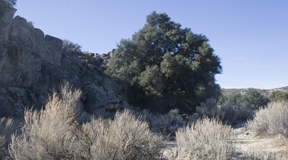
That is correct!
Oaks are a native plant that helps the land retain water. Cattle ate oak seedlings, erosion damaged the tree roots, and settlers cut down the oaks so their cattle could graze.
Story Project Planner
Choose Images for Story Project
-
Image 1 of 10
 Toggle Favorite The environment of the Campo Kumeayaay h...
Toggle Favorite The environment of the Campo Kumeayaay h...The environment of the Campo Kumeayaay homelands is especially susceptible to damage caused by grazing animals, such as cattle. 2009
-
Image 2 of 10
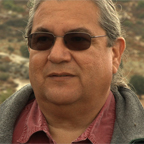 Toggle Favorite "The cattle eat the babies, so as the ne...
Toggle Favorite "The cattle eat the babies, so as the ne...Michael Connolly, environmental consultant and former tribal councilman
The cattle eat the babies, so as the new trees are coming up, they are continually mowing them down. So the trees are not able to get established.
-
Image 3 of 10
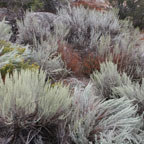 Toggle Favorite Sage is native to the chaparral environm...
Toggle Favorite Sage is native to the chaparral environm...Sage is native to the chaparral environment, but not to wetland areas. When a wetland disappears, different plants — such as sage — move in. 2009
-
Image 4 of 10
 Toggle Favorite "So eventually over time . . . you see a...
Toggle Favorite "So eventually over time . . . you see a...Michael Connolly, environmental consultant and former tribal councilman
So eventually over time . . . you see a lot of the non-native plants began to replace the native plants.
-
Image 5 of 10
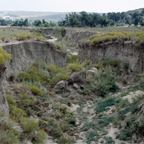 Toggle Favorite The grazing of cattle and the draining o...
Toggle Favorite The grazing of cattle and the draining o...The grazing of cattle and the draining of wetlands by ranchers and farmers are two factors that have contributed to the loss of water in Campo Kumeyaay homelands. ca. 1990
-
Image 6 of 10
 Toggle Favorite "There is no vegetation here anymore to ...
Toggle Favorite "There is no vegetation here anymore to ...Michael Connolly, environmental consultant and former tribal councilman
There is no vegetation here anymore to really hold back the water when it does rain.
-
Image 7 of 10
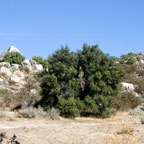 Toggle Favorite Because the native vegetation doesn't re...
Toggle Favorite Because the native vegetation doesn't re...Because the native vegetation doesn't regenerate very quickly, cattle grazing has caused plants and water to disappear. 2009
-
Image 8 of 10
 Toggle Favorite "Oak trees were considered a kind of a p...
Toggle Favorite "Oak trees were considered a kind of a p...Michael Connolly, environmental consultant and former tribal councilman
Oak trees were considered a kind of a pest tree by a lot of the settlers. They came into this area in the 1870s, and they cut down a lot of the oaks.
-
Image 9 of 10
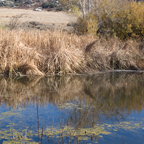 Toggle Favorite Many wetlands were drained intentionally...
Toggle Favorite Many wetlands were drained intentionally...Many wetlands were drained intentionally to make room for livestock and crops. 2009
-
Image 10 of 10
 Toggle Favorite "When the water level was high, there wa...
Toggle Favorite "When the water level was high, there wa...Michael Connolly, environmental consultant and former tribal councilman
When the water level was high, there was a big wet meadow around the riparian area. . . . The ranchers and farmers they saw it as swamp land that you had to get rid of. So in a lot of cases they would actually go in and cut a channel down through the middle to intentionally drain it.
Take Notes for Story Project
Take notes and save images to help answer these questions. Your images and notes will be saved to the Story Project where you can use them to create your own slideshow.



